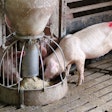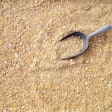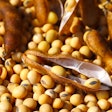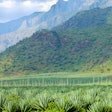The Agriculture and Horticulture Development Board (AHDB)/HGCA (Home Grown Cereals Authority)’s Early Bird Survey of UK farmers’ planting intentions shows a sharp rise in the total area of wheat and winter barley for harvest 2014 compared to 2013.
The team of agronomists assessing 280,000 hectares of arable land across Great Britain forecast that the total wheat area, including spring wheat, will increase by 22 percent to 1.98 million hectares at the UK level.
In this annual autumn survey, which provides the industry with a first snapshot of national planting decisions, cropping changes on individual farms in Great Britain were taken as a representation of national UK changes, assessing crops already drilled and growers’ planting intentions. “This autumn we’ve had good drilling conditions across the UK and, as a consequence, we are looking at a return to a more normal cropping mix for harvest 2014 following a large shift to spring cropping in 2013,” said Jack Watts, AHDB/HGCA lead analyst. “The return of a more normal UK wheat area is the first step to the UK returning to the export market, although yields and quality remain weather dependent. History shows that when farmers are able to turn intentions into reality, the Early Bird Survey gives a good indication of areas for key autumn sown crops in the UK.”
Winter barley is also set to increase 55 percent to 484,000 hectares compared with 2013, and is the highest UK winter barley area seen in a decade. Additionally, the survey predicts the second-highest oilseed rape area ever cropped, behind 2012, at 740,000 hectares; an increase of 3 percent against the estimated harvest area of 2013. Due to the good autumn planting conditions compared with 2012, areas of spring barley, pulses and fallow land are expected to fall to pre-2013 levels. The spring barley area is forecast to drop 40 percent to 534,000 hectares and, although the oat area looks set to decrease by 26 percent to 130,000 hectares, this still represents a relatively large area of oats.
“The conditions in 2012/2013 led many farmers to change their usual crop rotations, and some farmers will still be dealing with the consequences of this,” said Watts.














